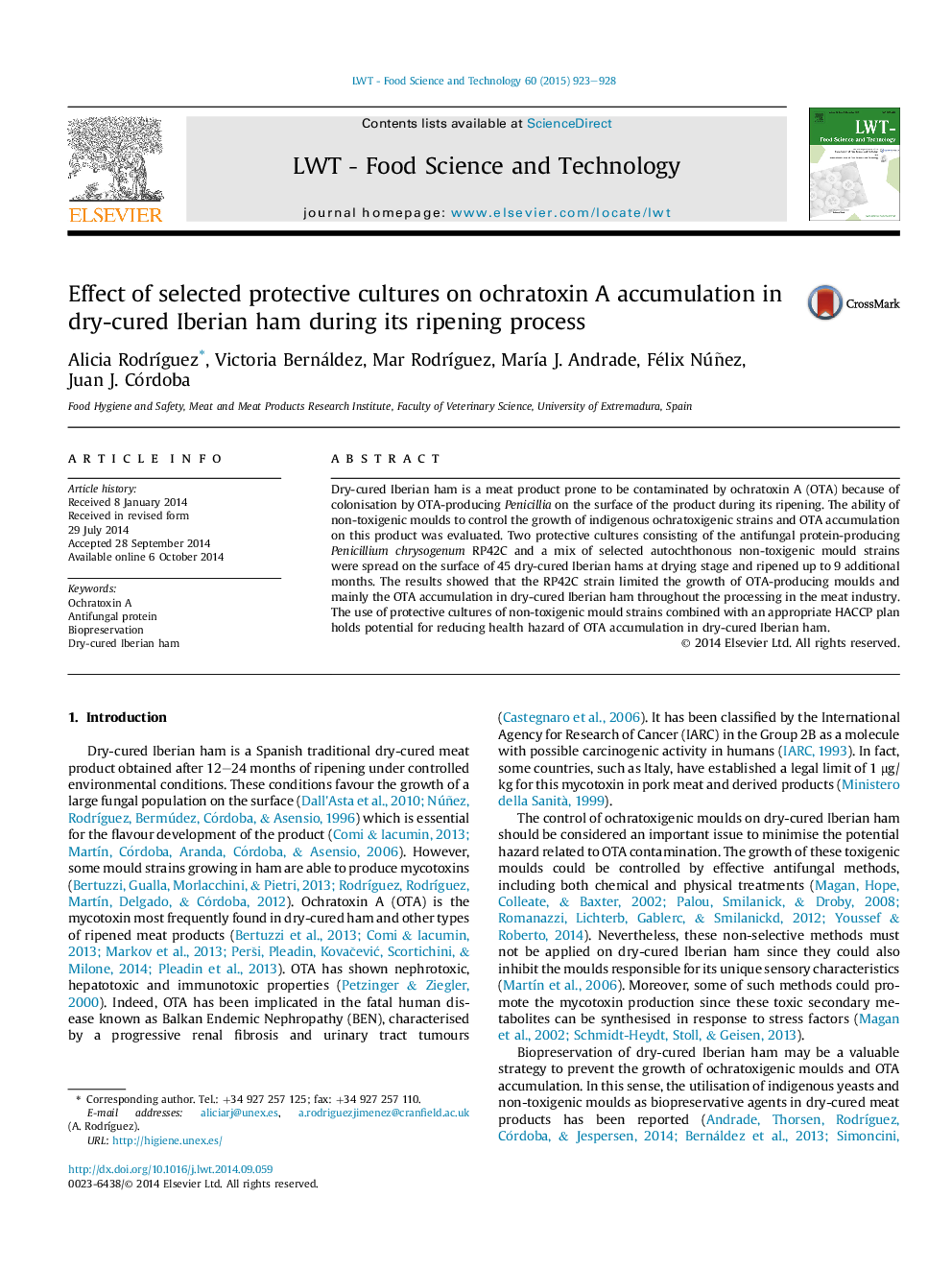| Article ID | Journal | Published Year | Pages | File Type |
|---|---|---|---|---|
| 6402480 | LWT - Food Science and Technology | 2015 | 6 Pages |
â¢Effect of selected non-toxigenic moulds on OTA accumulation was evaluated.â¢Non-toxigenic moulds limited growth of ochratoxigenic moulds in dry-cured Iberian ham.â¢OTA accumulation was controlled by Penicillium chrysogenum RP42C in dry-cured Iberian ham.â¢P. chrysogenum RP42C is suitable as bioprotective agent in dry-cured ham processing.
Dry-cured Iberian ham is a meat product prone to be contaminated by ochratoxin A (OTA) because of colonisation by OTA-producing Penicillia on the surface of the product during its ripening. The ability of non-toxigenic moulds to control the growth of indigenous ochratoxigenic strains and OTA accumulation on this product was evaluated. Two protective cultures consisting of the antifungal protein-producing Penicillium chrysogenum RP42C and a mix of selected autochthonous non-toxigenic mould strains were spread on the surface of 45 dry-cured Iberian hams at drying stage and ripened up to 9 additional months. The results showed that the RP42C strain limited the growth of OTA-producing moulds and mainly the OTA accumulation in dry-cured Iberian ham throughout the processing in the meat industry. The use of protective cultures of non-toxigenic mould strains combined with an appropriate HACCP plan holds potential for reducing health hazard of OTA accumulation in dry-cured Iberian ham.
